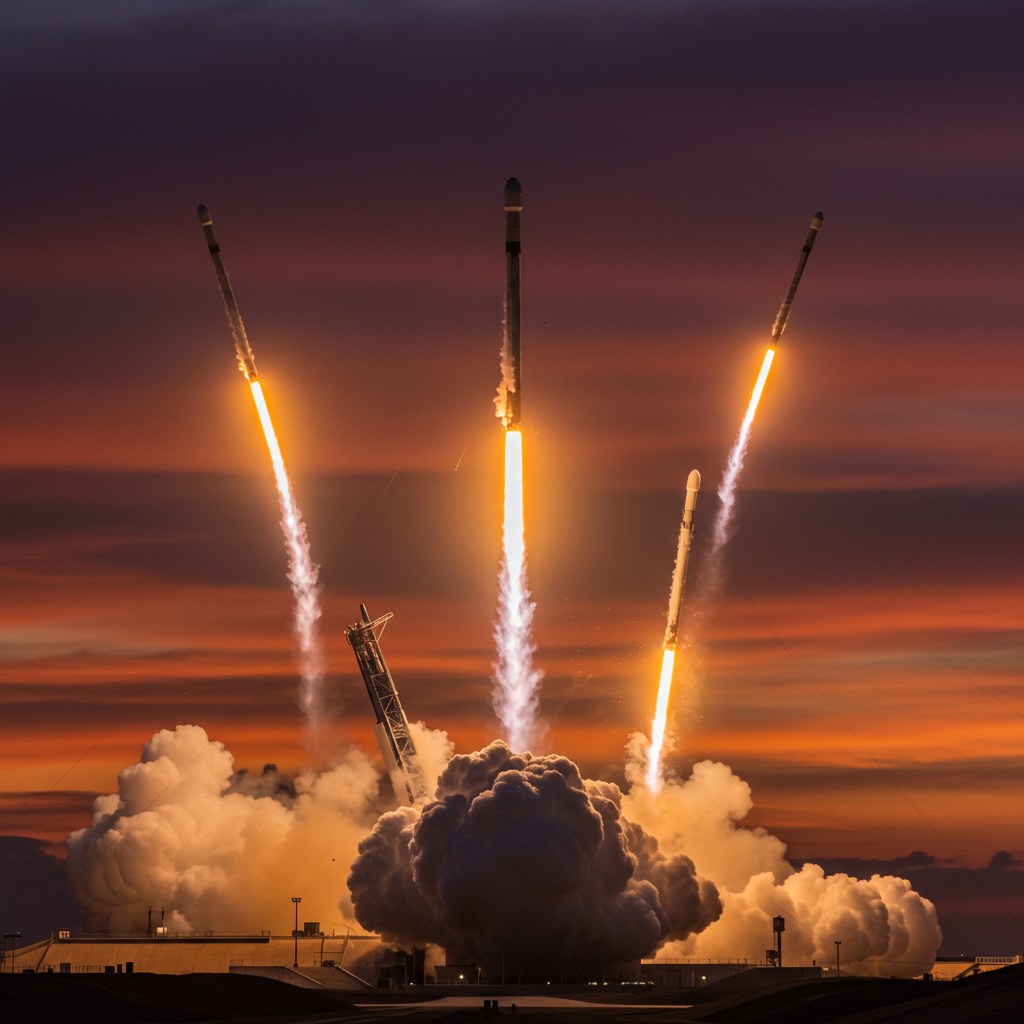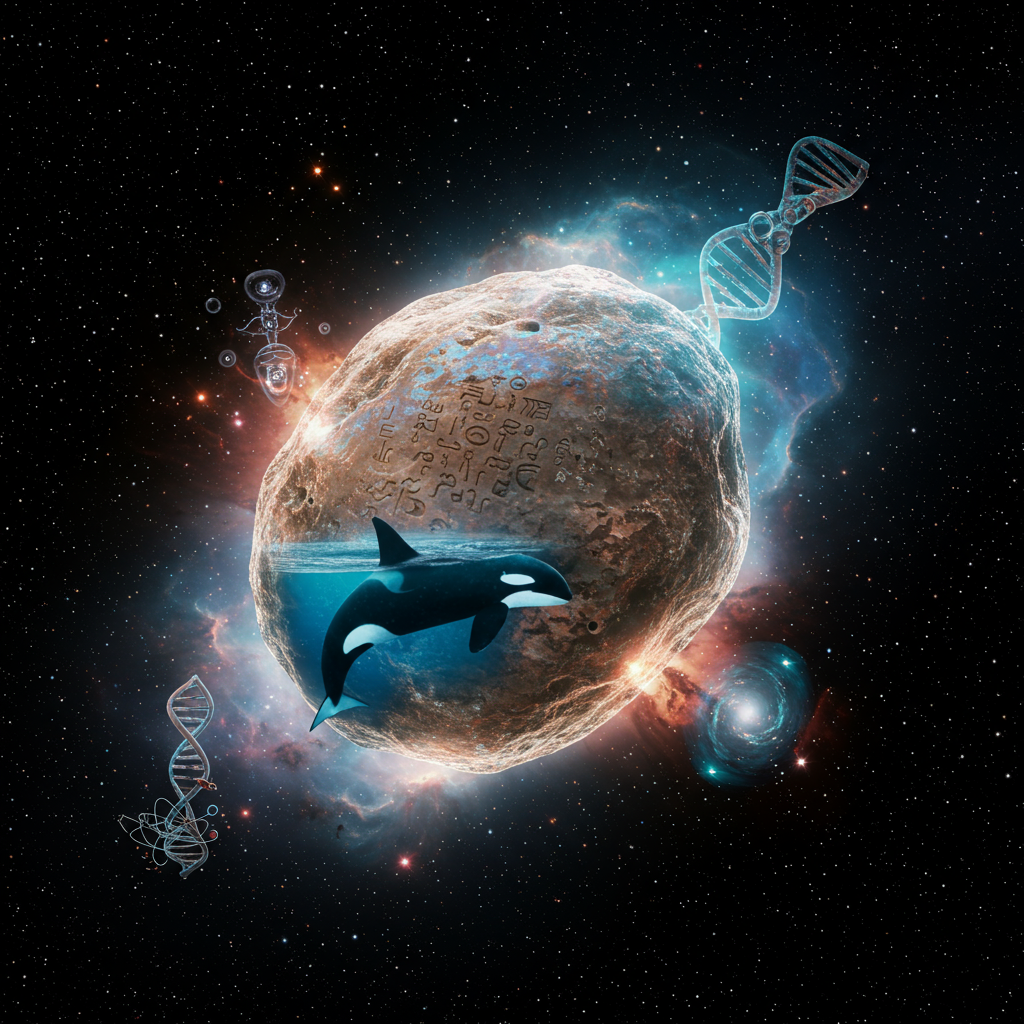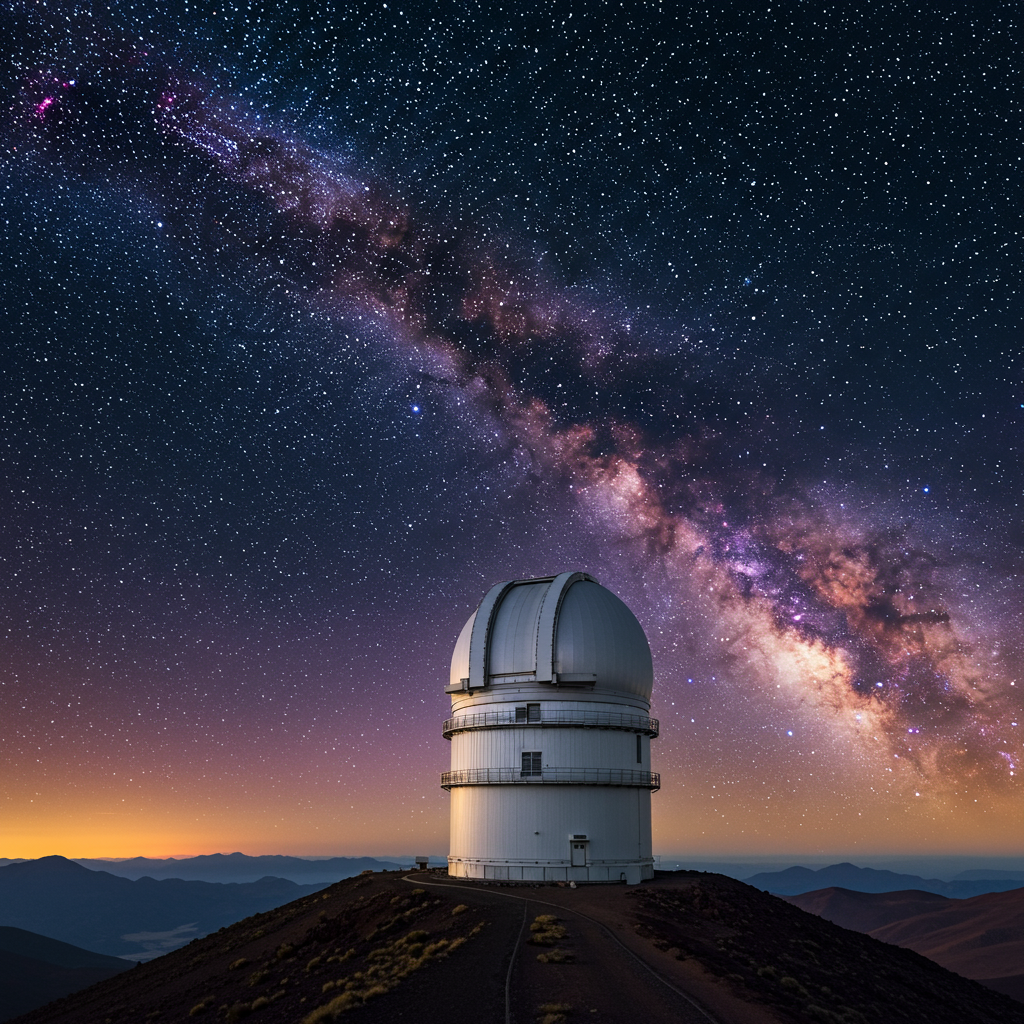This week ignites with a fiery display of orbital ambition, heavily dominated by a flurry of SpaceX Falcon 9 launches. As the global space industry surges forward, SpaceX is poised to conduct an impressive five missions, including a rare expendable Falcon 9 flight – its first since January. This bustling manifest underscores SpaceX’s relentless operational cadence and its pivotal role in expanding global satellite infrastructure, particularly with numerous Starlink deployments. Meanwhile, international players like China are also making their mark, highlighting a fiercely competitive and rapidly evolving space landscape.
SpaceX Accelerates Global Launch Cadence
SpaceX’s operational tempo continues to reach unprecedented levels in late 2025. This week alone, the company plans five separate Falcon 9 missions from both Florida and California. This aggressive schedule follows a first quarter that saw SpaceX launch 36 missions, a 16% increase over the previous year. Such a rapid pace solidifies its position as the world’s leading launch provider, significantly outpacing other nations.
The company’s commitment to reusability, a hallmark of the SpaceX Falcon 9 program, remains strong. Just last week, SpaceX celebrated its 500th successful booster landing. This impressive milestone reflects years of engineering innovation, making rapid turnaround times possible. Booster fleet leader B1067 recently completed an astonishing 31st flight, demonstrating the incredible longevity of these reusable vehicles.
Starlink’s Exponential Growth
A significant portion of SpaceX’s manifest is dedicated to expanding its Starlink constellation. This week features three Starlink missions, pushing the total number of satellites launched into orbit past the 10,000 mark. The Starlink program, vital for providing global internet access, continues to evolve.
Many of this week’s missions will deploy advanced Starlink v2 Mini satellites. These optimized satellites are 23% lighter than previous versions, allowing Falcon 9 to carry more per launch. Notably, one upcoming mission will loft 29 Starlink v2 Mini satellites, pushing the previous maximum for a single flight even further. With over five million users globally and beta programs for Direct-to-Cell service underway, Starlink is rapidly transforming connectivity worldwide.
A Rare Expedient: The SPAINSAT New Generation II Mission
Amidst the usual reusable flights, one mission stands out: the launch of the second SPAINSAT NG satellite. This critical payload demands the full performance capabilities of its Falcon 9 first stage. Consequently, booster B1076 will undertake its 22nd and final flight as an expendable vehicle.
This marks SpaceX’s first expendable Falcon 9 mission since late January, which also involved a SPAINSAT NG satellite. For this flight, B1076 will notably fly without its distinctive landing legs and grid fins, components crucial for controlled atmospheric reentry and landing. The decision to expend a booster highlights the unique performance requirements for placing heavy satellites into high-energy geosynchronous transfer orbits (GTO).
Veteran Boosters in Action
Several seasoned Falcon 9 boosters are slated for action this week. Booster B1075 is scheduled for its 21st flight, having supported a diverse manifest since January 2023. This includes 17 Starlink missions and several key rideshare and specialized satellite deployments. Similarly, B1081 will embark on its 19th flight, a booster known for ferrying astronauts on Crew-7 and critical cargo on CRS-29.
Further enhancing the impressive reuse statistics, B1077 is set for its 24th flight, just over three years after its debut on Crew-5. Finally, B1082, introduced in early 2024, will conduct its 17th mission. These boosters, along with their autonomous droneship counterparts like Of Course I Still Love You and A Shortfall of Gravitas, are the backbone of SpaceX’s high-frequency operations.
Global Ambitions: China’s Heavy-Lift and Artemis Program Challenges
SpaceX isn’t alone in shaping the future of space. This week, China’s Chang Zheng 5 rocket is poised for launch from Hainan Island. Known as China’s most powerful heavy-lift vehicle, the CZ-5 will carry an as-yet-unknown payload, potentially another classified communications satellite.
The CZ-5 plays a vital role in China’s ambitious space endeavors, having propelled missions like Tianwen-1 to Mars and multiple Chang’e lunar landers. Its variant, the CZ-5B, has been instrumental in assembling the Tiangong space station. This upcoming launch further underscores China’s determined pursuit of its own independent space infrastructure. Meanwhile, Japan’s HTV-X cargo supply vehicle launch has been delayed due to adverse weather, illustrating the persistent environmental challenges in space operations.
The Lunar Race and Starship’s Delays
Beyond current launches, the broader strategic landscape of space exploration is intensely competitive. NASA recently reopened the Human Landing System (HLS) competition for its Artemis III mission. This move, driven by concerns over SpaceX’s Starship schedule slips, aims to accelerate the timeline for the first U.S. crewed lunar landing since the Apollo era. NASA’s Acting Administrator, Sean Duffy, cited Starship’s delays and the U.S. desire to return to the Moon before China’s projected 2030 landing.
While Starship is still planned for Artemis IV, the new competition for Artemis III signals a potential pivot. Blue Origin’s Blue Moon Mark 1 lander, which doesn’t require complex orbital refueling and is already undergoing testing, is a frontrunner. SpaceX CEO Elon Musk, however, remains confident in Starship, emphasizing his company’s rapid progress compared to competitors. The challenges facing Starship, including recent Block 2 upper stage failures, highlight the immense technical hurdles in developing next-generation reusable super-heavy lift vehicles.
Frequently Asked Questions
Why is SpaceX conducting an expendable Falcon 9 mission now, despite its focus on reusability?
SpaceX primarily focuses on booster reusability to reduce costs and increase launch cadence. However, certain high-energy missions, particularly those requiring heavy payloads to be injected directly into geosynchronous transfer orbit (GTO), necessitate the Falcon 9 first stage to expend all its fuel for maximum performance. This week’s SPAINSAT New Generation II mission is one such example. The booster foregoes landing legs and grid fins, dedicating all its thrust to the payload’s journey. This is a rare occurrence, with the last expendable Falcon 9 mission also supporting a SPAINSAT NG launch in January.
Which SpaceX boosters are setting new records or making notable flights this week?
This week features several veteran Falcon 9 boosters demonstrating SpaceX’s impressive reusability. Booster B1067 recently became the fleet leader with an unprecedented 31 flights. Specifically for this week’s missions, B1075 is undertaking its 21st flight, B1081 its 19th, B1077 its 24th, and B1082 its 17th. These boosters, many of which have supported critical crew and cargo missions to the ISS, are consistently recovered on autonomous droneships like Of Course I Still Love You and A Shortfall of Gravitas, showcasing the remarkable engineering behind SpaceX’s operational success.
How do current launch trends impact global space exploration and satellite internet services?
The current surge in SpaceX Falcon 9 launches, particularly for Starlink, is rapidly transforming global internet connectivity, extending service to millions of users worldwide, including new Direct-to-Cell capabilities. On the other hand, challenges like Starship delays are impacting major exploration initiatives like NASA’s Artemis lunar program, intensifying the race to the Moon with global competitors like China. The overall trend highlights both the unprecedented access to space, driven by private companies, and the complex geopolitical and technical challenges that continue to shape the future of human and robotic space exploration.
Looking Ahead: A Dynamic Space Frontier
The upcoming week serves as a microcosm of the dynamic global space industry. SpaceX’s aggressive schedule, marked by both cutting-edge reusability and strategic expendable missions, continues to drive satellite internet expansion and commercial space access. Concurrently, nations like China are advancing their own robust space programs, while critical lunar exploration endeavors face technical hurdles and competitive pressures. As the pace of launches accelerates, the advancements and challenges witnessed this week will undoubtedly shape the future of humanity’s journey among the stars.




